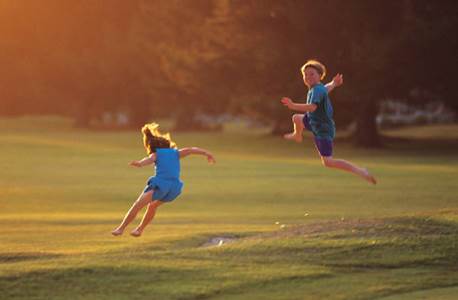
Pediatric Considerations
PTA 103 Intro to Clinical Practice 2
The following information is used for instructional purposes for students enrolled in the Physical Therapist Assistant Program at Lane Community College. It is not intended for commercial use or distribution or commercial purposes. It is not intended to serve as medical advice or treatment. Contact howardc@lanecc.edu for permissions.

In PTA 100, we introduced treatment considerations for the pediatric population. Outcomes and goal setting for pediatric populations are unique in that they are constantly adapted to meet the needs of a growing, developing, individual, and include immediate and extended family, teachers, coaches, and an interdisciplinary team. In this lesson, we will expand on the understanding of treatment theories and compare approaches for a given condition. Additionally, we will discuss and study specific considerations for pediatric patients diagnosed with asthma (Pagliarulo, 2012).
Physical therapy interventions vary, depending on many scenarios. There are standards in the profession that the physical therapist assistant (PTA) will encounter. This lesson is designed to help you become familiar with some of the more common pediatric physical therapy interventions and environments you may encounter. Interestingly, research has not proven one intervention better or worse than another when used appropriately. This may be because so many factors influence effectiveness. Master clinicians use a wide variety of techniques and interventions that can be modified based on variables including but not limited to the child's pathology, family structure, living situation, age, and past history. The following discussion is by no means an all-inclusive discussion of PT interventions; it should be used as an overview and guide.

The SAID principle stands for Specific Adaptations to Implied Demands (Holcomb, Baechle, & Earle, 2000). This applies to any human being regardless of ability or age.
Speaking in basic principles, our bodies will adapt specifically to the demands we place on it. So if you stress the body with aerobic based exercise, implied demand, it will compensate with adapting the cardiovascular system. Likewise, strength training will adapt with increased muscular strength and so on. According to this principle, doing cardiovascular exercise will not necessarily increase strength and increasing strength will not necessarily increase cardiovascular measures. This is a basic understanding and there is, obviously, carryover between systems as well as a difference in response depending on the type of cardiovascular and strength training. In general, you want to select exercises that are specific to your goals. Your body will learn to respond to the stress you place on it.
A child's way of getting stronger is through play. Stop-start activities are often the foundational and normative activities for young children in early elementary school.
In pre-adolescence, children are engaged in more skill based activities such as T-ball, softball, baseball, and soccer.
Pre-pubescent children can gain strength during activities, but muscles do not hypertrophy. In puberty or adolescence, strength gains occur through resistance activity such as gym based activities that involve resistance.
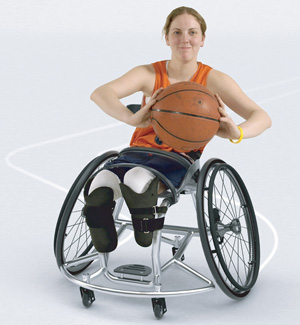
Exercise specificity examples
Goals for the pediatric client are restoring function. For kids with neuromuscular conditions, this may mean improving head control to allow for progression in sitting activities. In the musculoskeletal population, this may mean conditioning for return to sport after joint injury or concussion. In each case, impairment-only goals do not meet the rigor required in a PT plan of care.

Many times it becomes apparent that what at one time appeared to be a relevant functional goal is no longer so, due to progressive development, changes in condition, or changes to family priorities. When this occurs, the goal should be revised to make it more applicable by the physical therapist. The PTA can suggest modifying goals as appropriate and give these suggestions to the PT.


The intervention plan is grounded in the ICF model, aiming for optimizing activity at home, school, and community. Interventions should be based on what is appropriate for both the child and the family. Interventions should always consider the related body structure and functions. If the injury is acute in nature (flare-up in arthritis, soft tissue shortening secondary to immobilization, torticolis, or an injury/surgery that requires gait training with an assistive device), then the PT plan of care will look very different from PT from a neuromuscular developmental disability (cerebral palsy, traumatic brain injury, Down syndrome, developmental delay).
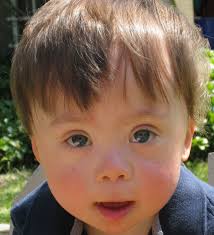
For American children in the age range of birth to 3 years, pediatric physical therapy intervention may take place within early intervention. Services delivered in this way must be family-centered. Historically services were child-centered and mostly focused on the specific needs of the child. Family-centered service broadens the scope of the interventions and focuses therapy on the family and the child's position in the family. Therapists assume more of a coaching role, working with the child through the family.
Intervention should also be embedded in routines that already occur in the home or within the child's day. Thus lots of time and energy will be focused on teaching the family members how to handle, position, and interact with the child to get optimal performance from the child over the span of the day. Therapy goals are worked on throughout the entire day, not just at therapy-designated time. If a child needs to increase strength, then appropriate activities will be designed so that the child works on strength while participating in his or her regularly scheduled activities. Leg strength can be improved with squat-to-stand activities. If a container/toy is placed on a low table surface, and all of the pieces are on the floor, the child must repeatedly perform squat-to-stand activities to put all the pieces into the container. Likewise, if therapy is focusing on improved fine motor skills, pulling diaper wipes from a container will work on grasp-and-release movements. These are activities embedded in typically occurring routines. If the child needs to improve a gait pattern, the parent will be taught stretching activities that can occur at every diaper change, for instance. Ambulation can be built into going to check for mail at the box or cruising around the bedroom or kitchen. A child will be more inclined to cruise if furniture is placed close together to provide ready support.
As the child enters school age, the focus of therapy may switch from a family-centered to an education-centered approach. Therapies delivered within an educational environment must focus on improving school performance. Therapy services outside the educational system may continue to be more child/family centered. For example, a 6-year-old child with diplegic cerebral palsy attends school. The child lives on the second floor of a two-story walkup building. There are no elevators in this building. The child has difficulty ambulating up the many steep steps to his apartment. His school is in a single-story building without steps. If the family wanted this child to improve his safety on the steps at the apartment, providing practice opportunities would be outside the mandates of the school therapist, since there are no steps in the school building. Thus the goal is not educationally relevant. However, the astute therapist will think about the child's participation in school activities outside of the building, such as ascending and descending the school bus steps or the playground equipment. In this way therapy could focus on stair climbing, which is important to the child's ability to be independent and safe both at home and within his educational environment. Additionally, the family may choose to engage the services of a community-based therapist to work on non education-based goals.
After the therapist, family, and child, if appropriate, have developed goals, the therapist should decide what intervention technique(s) may be most efficient and effective at helping the child meet the goals. There are several types of interventions and differing philosophies. In this chapter several of the interventions will be discussed. By no means is this an all-inclusive list or a ranking of the "best" interventions.
Common interventions include the following:
The basis for all treatments must embrace in some form the dynamic systems model of motor control and motor learning. This model explains that all components of a child's world must be considered and will be influenced by all systems working in concert or conflict with each other. Fay Horak wrote that humans accomplish tasks using interacting systems that work together in an integrated fashion with shifting dominance . There are several physiologic systems, as well as environmental and cultural systems, to consider before determining the optimal intervention. If any component of any of these systems is not on target and not working in concert with the other systems, dysfunction will occur. It is up to the treating therapist to collect all the clues and decipher which component is not up to par, then determine if intervention focus should correct the malfunctioning component or assist the child and family to adapt and learn new strategies in order to function as independently and optimally as possible.
|
INTERVENTION |
PHILOSOPHY |
APPROPRIATE USE |
|
Neurodevelopmental treatment (NDT) |
Uses motor control to effect postural control and interactions between many neurologic and physiologic systems. Enhances the individual's capacity to function.
|
Children with cerebral palsy and motor disorders |
|
Proprioceptive neuromuscular facilitation (PNF) |
Strengthens muscle groups within diagonal and rotational movement patterns, based on developmental sequence and the sequential mastery of motor milestones.
|
Children with muscle imbalances |
|
Conductive education (CE) |
Views child as a whole child, using learning concepts, motor control/motor learning, and the group model to improve function. Learning movements and functional skills requires practice, intention, group motivation, and breaking down skills into task series. Uses specialized equipment to enhance child's orthofunction (ability to be functional and independent).
|
Children with C P, spina bifida, and other motor disorders |
|
Strengthening balance, gait and stability |
Improved function through improved strength, bone density, joint structures, muscle function, and management of obesity.
|
Children and infants with weakness and muscle imbalances which include but is not limited to Down's Syndrome, Duchenne's Muscular Dystrophy, Cerebral Palsy, Spina Bifida and developmental delays due to pre-term deliveries in some cases. |
|
Therapeutic taping |
Uses rigid or flexible taping to support and influence muscle groups. |
Children with muscle weakness, joint instability, joint malalignment, and postural asymmetries
|
|
Sensory integration (SI) |
Provides controlled sensory input to help children with sensory processing. |
Children with sensory processing dysfunction; children exhibiting dysfunction in ability to take in and process sensory information, organize behaviors and movements, or formulate/plan/and execute motor plans.
|

In addition to the physiologic systems, each child is influenced by environmental and cultural systems. Environmental systems include the child's primary living habitat, school or day care facility, neighborhood, and resources to function in these environments. Cultural systems include the family's traditions and beliefs, the extended families' traditions and beliefs (which may differ somewhat from the immediate family's), and known or perceived expectations of the child from society at large.
In order for an intervention plan to be successful, all the described systems that have an effect on a child must be continually assessed and monitored. Although a child may have a primary pathology or functional limitation, various influences from other systems may negatively affect the child and impact the primary impairment.
Neurodevelopmental treatment (NDT) originally was theorized by Berta and Carl Bobath (Pagliarulo, 2012). Since its inception in the late 1940s, the approach underwent a major shift of focus in the 1990s. Originally the approach focused on patterns of movement. Dysfunction of the movement patterns was thought to be caused by a loss of control from damaged higher centers in the brain. These lesions unleashed abnormal reflex activity. In the 1990s a shift from an orthopedic model to a biomechanical and systems model occurred. Current NDT theory embraces knowledge of motor control and looks at the effects of postural control as a result of interactions between many neurologic and physiologic systems.The overall goal of management and treatment, according to NDT theory and tenets, is to enhance the individual's capacity to function. Intervention involves a hands-on approach when working with individuals with central nervous system insults that create difficulties in controlling movements, with NDT embracing several general treatment principles:
In summary, pediatric NDT is primarily used to treat children with cerebral palsy and other movement disorders. However, aspects of the theory are applicable to many different clinical scenarios.
Proprioceptive neuromuscular facilitation (PNF) was developed in the early 1950s by Dr. Herman Kabat and Maggie Knott (Pagliarulo, 2012). The goal of PNF was to strengthen muscles within functional movement patterns rather than straight-plane or anatomic-plane motions. These movement patterns are known as diagonals. Physical therapist Dorothy Voss added many clinically relevant techniques to the PNF patterns. The theoretical basis for PNF rests within the hierarchical model of development. Hence PNF theory is based on the developmental sequence and the sequential mastery of motor milestones.
This is one demonstration of a PNF technique. Be prepared to learn more about PNF in 204 Lab. I recommend for those interested to be mentored by a PF therapist or better, take a class in PNF specific to physical therapy and PNF.
Diagonal patterns can efficiently and effectively address specific problems of musculoskeletal weakness, and PNF is based on the principle that human beings respond in accordance with the demand placed upon the neuromusculoskeletal system. Two diagonals of motion exist for each major part of the body, and each diagonal is made up of two patterns that are antagonistic to each other. Each pattern has a component of flexion or extension. Each diagonal involves movement toward and across the midline or movement across and away from the midline and includes rotation with a flexion or extension pattern. When assessing the patient, PNF treatment protocols will look first at the patient's functional abilities. The identified stronger areas (agonist) will be used within the treatment session to assist the weaker areas (antagonist). Treatment movement patterns must be specific and directed toward a goal. Additionally, activity that will best develop coordination, strength, and endurance is necessary. Stronger body parts assist in strengthening weaker body parts though cooperation of muscle groups to achieve optimal function. For this reason PNF places great emphasis on using maximal resistance tolerated throughout the entire range of motion; by resisting stronger muscles, weaker muscles will receive overflow/reinforcement to help them become stronger and more coordinated. To initiate a movement, PNF technique may call for a stretch of the synergist. This provides the increased proprioceptive stimulation necessary to create a chain of muscle activity from a completely lengthened state to a completely shortened state, where the shortened muscle is the agonist.
In summary the PNF techniques work optimally in individuals with muscle imbalances secondary to spasticity, flaccidity, weakness, or pain. As a patient improves, coordination and balance activities can be added. Treatments tend to be intensive, using the patient's existing capabilities and skills without increasing pain or fatigue. The overall emphasis is on improving the person's function .


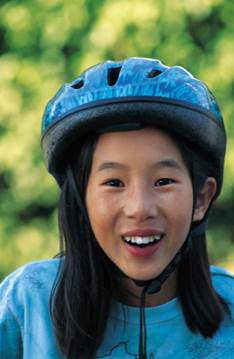
Conductive education was theorized by Andres Peto in 1948 in Budapest, Hungary. It is an integrated system that allows a child with motor dysfunction to learn to move within functional skills. Peto believed that children with motor disorders could learn to move by utilizing their brain's plasticity. He believed that learning movement required practice as well as rhythmic intention, so he based his technique on the educational principles of group learning and motivation .
Conductive education is based on four primary principles: a conductor, the group setting, rhythmic intention, and a specific task series for each functional skill. A conductor or a therapist trained in conductive education leads a session. The children attend in a group setting, with a typical ratio of 3 children to 1 adult. Skills are broken down into a series of tasks by the conductor. Children receive individual assistance as needed in order to complete the task at hand. The group of children practices each task until mastered, and then individual tasks are built into mastering skills. Rhythmic intention is the cadence set to time a movement or series of movements. Rhythmic intention allows children to replay the cadence and perform newly learned movements on their own. The cadence helps the child initiate a movement, sequence a movement, and complete the movement. Conductive education focuses on the functional skills a child needs to be optimally independent. This notion is also known as orthofunction. Motor learning and motor control principles come into play, and intensive amounts of practice time are part of conductive education programs.
Conductive education programs use specifically designed equipment that assists the child to perform a movement. Slatted plinths and benches allow the child to grasp between the slats for stability. Additionally, horizontal or vertical posts can be attached to table tops to provide anchors for children to use to stabilize themselves against gravity. Ladder-back standers and ladder-back chairs also provide graspable uprights to use while practicing ambulation. Conductive education programs in the United States are typically 3 to 4 hours per session, with sessions occurring 3 to 5 times per week. Given that generous amount of treatment time, there is wonderful opportunity to practice and use feedback and feed forward mechanisms to master a task and eventually master the skill.
In the United States the trend is to develop transdisciplinary or interdisciplinary teams to provide conductive education programs, using conductors and therapists working together. Some programs also use a hybrid system that allows the child to simultaneously attend their educational program (school) and a conductive education program.
Conductors, who until recently could only receive training in Europe or Hungary, can now earn a teaching certificate with an emphasis on conductive education pedagogy in the United States, and therapists in the United States can receive additional training in the pedagogy of conductive education and be certified as well.
In summary, conductive education is an intensive motor training program that uses motor learning and motor control principles, along with educational learning principles, to teach children with movement disorders to move to their highest potential. This leads to the child being as functional as possible. Conductive education is not appropriate for all children. However, many of the principles and tenets of conductive education can be used successfully with children who may not be eligible for an entire conductive education program.




Current theories in rehabilitation support the fundamental notion that children with motor impairments must work on strengthening and stability. There is strong evidence in the literature about the importance of strengthening for children with spasticity . Appropriate weight bearing through the long bones helps to maintain bone density and joint structure.
Exercise and strengthening are mandatory for a child with movement disorders to prevent overuse of the strong muscles, atrophy and wasting of weaker muscles, and obesity for children who cannot move as efficiently as their typically developing peers .
Different tools are used to help a child become stronger and more efficient. Appropriate use of a appropriate sized physioballs can be a tool to proximate core muscle strengthening in prone, sidelying, quadruped or supine. Various techniques may be used in addition to any of the other therapeutic techniques when working with a child and/or the child's family.
Therapeutic taping is used to provide support or input to a muscle group. Flexible taping is also known as Kinesio taping, while rigid taping is known as Leukotaping or strapping.
Kinesio taping helps to support weakened muscles or prevent muscle overuse. Kinesio tape is flexible and has elastic properties. To strengthen a weakened muscle, the tape is applied from origin to insertion. To prevent cramping or over contraction of a muscle, tape should be applied from insertion to origin.
Leukotaping (named after Leuko sports tape) is rigid strapping used to support a joint in normal alignment. Muscle facilitation for appropriate firing can be achieved by laying the tape parallel to the muscle fibers. Similarly muscles can be inhibited by laying the tape perpendicular to the muscle fibers. Over time it has been demonstrated that bony remodeling can occur with appropriate and consistent rigid taping.



TheraTogs (2016) is an orthotic product designed to capture the benefits achieved with taping without directly adhering to the skin. The client wears a vest and shorts made of a neoprene-type material. With additional arm and leg cuffs, flexible or rigid straps can be added to the suit to facilitate or inhibit movements. TheraTogs are easy to don and doff, should be worn directly next to the skin, and easily fit under typical street clothes and diapers. The TheraTogs provide consistent input, essentially where a therapist would provide manual input for the child, in the absence of handling the child.
Sensory integration therapy assists the child by using controlled sensory input to help children with sensory processing difficulties.It is a theory of brain-behavior relationships.The theory has three major components: normal sensory function, sensory integration dysfunction, and a programmatic guide for using sensory integration techniques. Ayers felt that learning is dependent on the person's ability to take in and process sensory information from the environment and self-movements, then organize behavior and movements in response to these inputs. If an individual has difficulty integrating and processing, the result will be deficits in planning and executing movements and in motor learning. To remedy this dysfunction in motor learning, intervention within a meaningful context must occur to improve the ability of the central nervous system to process and integrate sensory inputs.
In summary, sensory integration treatment encapsulates three areas: the theory, the evaluation, and the treatment. Each is vital in treating the child. A clinician can receive additional training in sensory integration theory and treatments.
Week 5 content includes content in obstructive lung diseases, such as asthma. This lecture expects you to be able to apply your knowledge of conditions and consider environmental and personal factors that influence activity and activity tolerance in children with asthma
Asthma attacks are generally recurring episodes, and by definition airway obstruction is reversible. Key points specific for pediatrics include:
(From Zitelli BJ, Davis HW: Atlas of pediatric physical diagnosis, ed 5, Philadelphia, 2007, Mosby.)
A child may also be using accessory muscles in the ribcage to breathe; in this instance, the child may appear winded.


After a review of the child's medical history, physical therapy evaluation should focus on identifying any areas of impairment, functional limitations, and activity and participation limitations. Examples of considerations in evaluation include:
| FUNCTIONAL ACTIVITY |
SECONDARY PROBLEMS |
|---|---|
|
Breathing |
Inadequate breath support and inefficient trunk muscle recruitment at rest or with activities, such that breathing or postural control are compromised. Asthmatic triggers such as rapid air flow caused by sudden increase in physical activity, dry air,extreme temperatures, or other triggers that trip an asthmatic reaction |
|
Coughing |
Ineffective mobilization and expectoration strategies |
|
Sleeping |
Breathing difficulties, signs of obstructive or central sleep disorders Nocturnal reflux (GERD) |
|
Eating |
Swallowing dysfunction Reflux (GERD) Dehydration Poor nutrition |
|
Talking |
Inadequate lung volume and/or inadequate motor control for eccentric and concentric expiratory patterns of speech Poor coordination between talking (refined breath support) and moving (postural control) |
|
Moving |
Inadequate balance between ventilation and postural demands Breath holding with more demanding postures: use of the diaphragm as a primary postural muscle for trunk stabilization Inadequate lung volume to support movement Inadequate and/or inefficient muscle recruitment patterns for trunk/respiratory muscles, causing endurance problems or poor motor performance Ineffective pairing of breathing with movement, especially with higher-level activities
|
|
From Campbell SK, Vander Linden DW, Palisano RJ: 2006. Physical therapy for children, ed 3, Saunders. Philadelphia Note: These activities require adequate lung volumes and coordination of breathing with movement for optimal performance.Ty pical secondary problems associated with asthma should be screened for to determine their possible contribution to the child's motor impairment or motor dysfunction. |
|


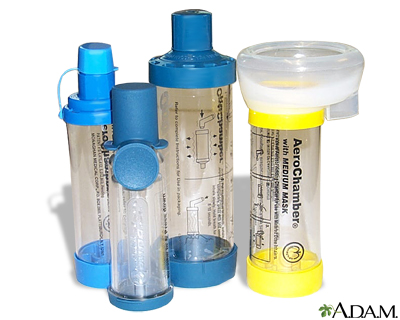
Physical therapy intervention of asthma comprises both short-term (medical needs and musculoskeletal restrictions) and long-term (reducing secondary impairments, usually through an established exercise regimen) goals
In caring for children with asthma it is imperative to have their diagnosis and asthma management plan on hand. Anyone involved with the child's care should be ;well-instructed in signs and symptoms of asthma as well as how and when to administer asthma medications or call for emergency help if needed. An individualized asthma management plan includes the child's asthma history, triggers and symptoms, ways to contact the parent/guardian and healthcare provider, physician and parent/guardian signatures, the child's target peak flow reading, and a list of current asthma medications. The plan will also include the child's treatment plan for medications, based on symptoms and peak flow readings.
Peak flow monitoring can be effectively used in children age 5 and older. There are many different peak flow meters available on the market. The simple device measures how well air is moving out of a person's air ways. To use the device, one takes a deep breath in, places the mouth on the peak flow meter, and exhales as fast and completely as possible. A reading will appear on the meter. Usually the steps are repeated a few times to ensure accuracy. Each person who uses peak flow monitoring has a personal best or target reading. Lower numbers may call for attention with medications and additional monitoring. Very low numbers demand emergency attention. Peak flow numbers or zones should be included in the asthma management plan. Though quite effective, peak flow monitoring is only one indicator of asthma stability or problems. Other symptoms such as coughing, wheezing, complaints of shortness of breath, and chest tightness should also be considered.
Major drug classifications include bronchodilators, corticosteroids and combined beta-agonist/corticosteroids.
Asthma may be treated and controlled with a variety of pharmacological interventions. Many patients have at least two types of medications.
The first type is used as a preventive or maintenance medication. Preventive medications can be oral or inhaled and are used to help decrease the inflammation of the airways or decrease the response to triggers such as allergens. Combined beta-agonist/corticosteroids are preventative
The second is a rescue medication. Rescue medications are usually supplied in the form of an inhaler that contains a bronchodilator such as albuterol.
Albuterol quickly helps to open the airways,enabling an asthmatic to breathe easier. It is important to distinguish between the two types of medications. A preventive inhaler will be of no help during an acute asthma attack.
Children with asthma should also keep extra rescue inhalers at school and at any caregivers' homes.
Spacers
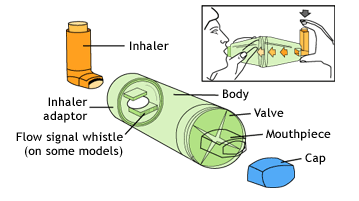
It is vital for caregivers to be able to identify when a child is having difficulty breathing or having an acute episode. Activity should be stopped when these symptoms are noticed. If a child has an asthma management plan, instructions with regard to medications should be closely followed. If the child does not respond to medications or fails to improve,emergency help should be sought.
If a child is hunched over, straining to breathe, has difficulty completing a sentence, looks ashen or has blue lips and fingernails,immediate emergency help (i.e., a 9-1-1 call) is warranted.
Exercise-induced asthma is a special consideration. Children and caregivers can try to ;reduce triggers like allergens and irritants, but exercise should not be avoided to avert an asthma attack. Rather, with medications and possibly some modifications to physical activity, he symptoms can be controlled. Often a physician ;will recommend giving a dose of rescue medication prior to exercise to decrease the child's chances of having an acute asthma episode. This can be very effective. In addition, a child who has had a recent asthma episode is more likely to have additional episodes, and therefore the level of exertion should be modified.The physical therapies assistant can create an individualized exercise regimen that will improve muscle function while minimizing the risk of an asthma attack.
Exercising indoors or in a warm, humid environment rather than outdoors or in a cold, dry environment can reduce the frequency of asthma attacks. Recent research has determined that weather factors, pollen, and the different seasons have an effect on the severity of asthma symptoms.


Campbell SK, Vander Linden DW, Palisano RJ: 2006. Physical therapy for children, 3rd Ed. Saunders, Philadelphia
Centers for Disease and Control, 2016. Trends in Asthma Prevalence, Health Care Use, and Mortality in the United States, 2001–2010. Available at: http://www.cdc.gov/nchs/data/series/sr_03/sr03_035.pdf#x2013;2010 [PDF - 910 KB]
Holcomb, W. R., Baechle, T. R., & Earle, R. W. (2000). Essentials of strength training and conditioning. Champaign, IL: Human Kinetics.
O'Shea, R. K. (2009). Pediatrics for the Physical Therapist Assistant.1st Ed. Saunders Elsevier, IL.